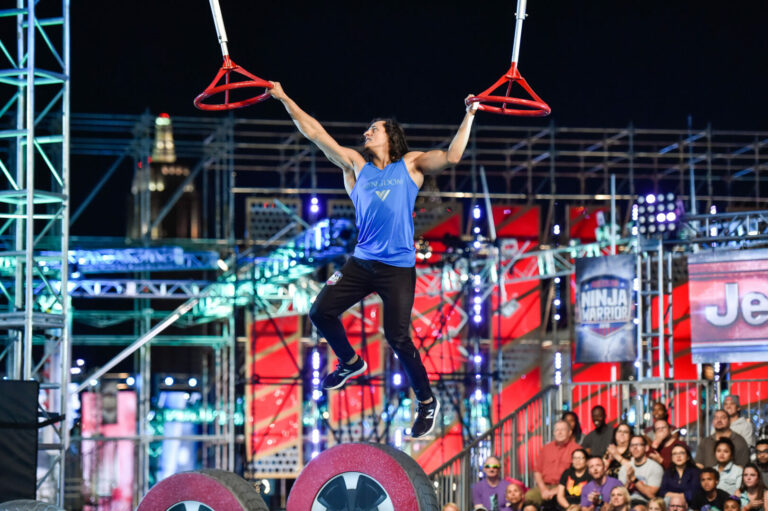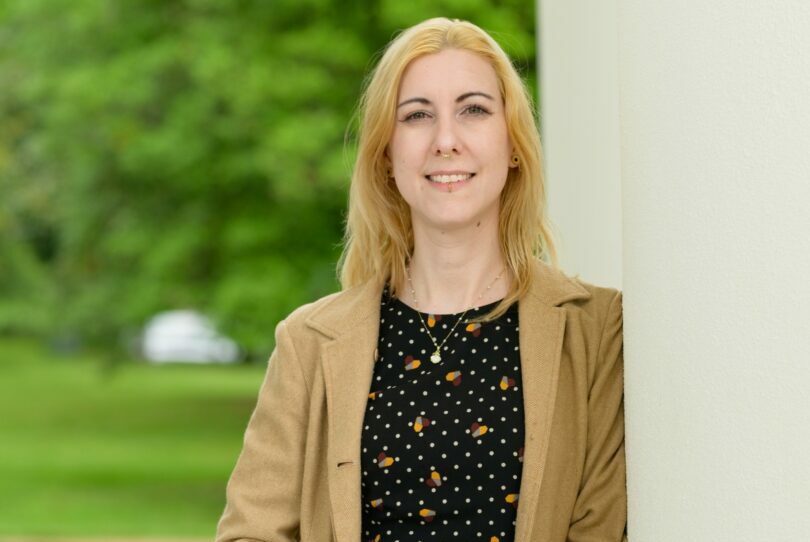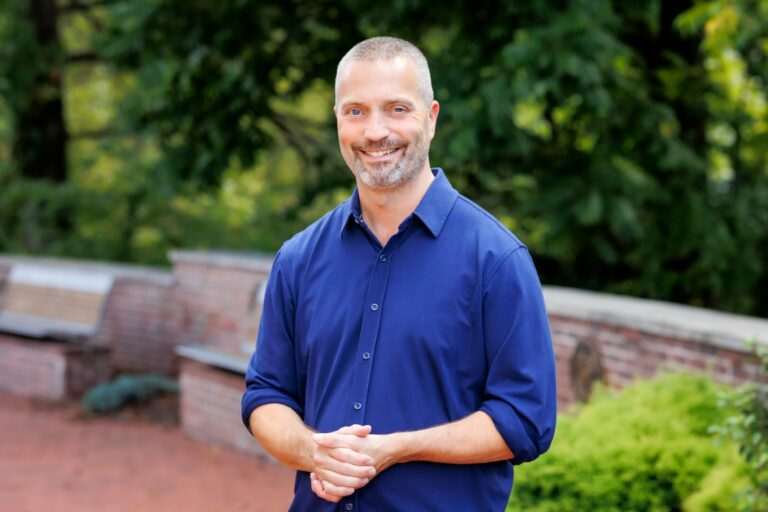We caught up with the brilliant and insightful Savannah Sokol a few weeks ago and have shared our conversation below.
Savannah, first a big thank you for taking the time to share your thoughts and insights with us today. I’m sure many of our readers will benefit from your wisdom, and one of the areas where we think your insight might be most helpful is related to imposter syndrome. Imposter syndrome is holding so many people back from reaching their true and highest potential and so we’d love to hear about your journey and how you overcame imposter syndrome.
I’ve dealt with imposter syndrome so many times on my path to where I am today, and to say I’ve ‘overcome’ it completely wouldn’t exactly be accurate. It seems, to me, that imposter syndrome is part of the territory of being a creative. It’s not only the creeping question of if I’m “good enough”, it’s also the question of if art as a whole is ‘worth’ what we’re charging. Not only are we looking at our own intrinsic worth but the intrinsic worth of our field. Every price jump and leap into a new market brings these questions out again. Personally, I spent my formative years being told that I needed to think practically, have a back-up plan, etc. I was told repeatedly that art wouldn’t be a safe career; that I’d be a starving artist. Shifting your mindset when you have years of external pressures telling you that if you pursue this, you will fail — well that’s inherently difficult. It makes you question everything.
There’s a lot of talk in the industry about ‘shifting your mindset’, as if it were as easy as changing the direction of your sails on a boat. Educators tell you what you should think and in theory, you should be able to just change and be on course. Allow me to continue with this naval analogy for just a moment, even though it’s likely imperfect — suppose you’re the ship in this scenario. The ocean is all of the thoughts that you could think, all the directions you can go and journeys you can embark upon. But in the ocean, there are swirling eddies — nearly impossible to break out of once you’re in their grasp, even with all the sail changes in the world. Toxic thought spirals are a lot like that — it can be nearly impossible to break out of, even with the best intentions. All that to say, I think these conversations about mindset shifts are great — they’re important conversations. When you’re sailing on the clear ocean, changing your sails can very well change the direction of your ship. But when you’re in an eddy, you need to get to a place where changing your sails will even make a difference. Similarly I think there’s a conversation we should be having first, and that’s how to get a place where you can even do this work to shift your mindset.
For me, that was doing something recommended by my favorite book, The Anthropocene Reviewed — I started paying attention to what I was paying attention to.
Our mind is such a strong thing, but it works with what it’s given. What we’re paying attention to has a direct correlation to how we’re feeling, what we’re thinking. Now I’m not saying that we should bury our heads in the sand and only pay attention to sunshine and rainbows, but there’s something to be said about balance. I’m also not saying that if you start this practice, everything will be sunshine and rainbows, but it’s definitely made a difference in my life for the better. For too long, my inner voice was my harshest critic and at times, an outright bully. The people I surrounded myself with and the media I consumed didn’t believe in me either. I was in a constant state of “everyone is better than me so what is the point”. I was counting myself out before I even entered the arena.
Once I really started to change my surroundings — building community, reducing my time on socials (oh my god, it’s hard), reading more fiction, pursuing inspiration outside of the wedding-sphere… that’s when I was really able to lean in and do the deep internal work that was necessary to shift my mindset. I began to change the way I was thinking about myself and my career…
I celebrated my strengths.
I evaluated whether I was actually ‘bad’ at things, or if I just hadn’t put in the work to ‘get good’.
I gave less mental space to the roles that I wasn’t fulfilling.
I leaned into the things I love about what I do, and started to outsource the things I loathed.
I gave myself more grace. We all make mistakes, what matters is how we respond to them.
I stopped borrowing anxiety from tomorrow and began to focus on things that I could change.
I reminded myself of all the reasons I do what I do beyond the creative fulfillment — the service that comes along with being a wedding creative, the work that goes into making a wedding day work. The interactions that really live an impact on the people we serve and the lives that we touch.
And sure, there may come a time soon — maybe next year or even next week — where I experience imposter syndrome again. In fact, I expect it. There will be a time when those thoughts creep in again. The best thing that I can do until then is to continue to practice good self-talk, give myself grace, and pay attention to the things I’m paying attention to. With those tools, I’ll be able to right the ship,
All-in-all, overcoming the looming imposter syndrome has been the result of Practicing good self-talk, surrounding myself with people who believe in me, pushing myself outside my comfort zone, and leaning into my passion has allowed me to step into my confidence as not only an artist but as an entrepreneur.


Let’s take a small detour – maybe you can share a bit about yourself before we dive back into some of the other questions we had for you?
So, first off, I’m a wedding photographer based in Northwest Ohio. I absolutely love what I do. Truly, the last decade of serving couples has been the honor of a lifetime.
But I’ll be so real with you when I say that I didn’t start out planning to be a wedding photographer. I don’t think any of us really do — and if you do, freakin’ props to you. I had always loved photography but was never really sure I could make a go of it. Like I said before, there’s this starving artist sterotype that gets hammered HARD when you even think about pursuing the arts. Meanwhile, I got a couple of degrees in disciplines that are only tangentially related to what I do today — communication and education. I pursued photojournalism in undergrad, thinking that was a more practical pursuit and even won a few awards in college. I dreamt of becoming a war correspondent, chasing stories that mattered. It was when I began to dive into the courses at the art college for my minor that I began to really think differently about photography.
On the very first day of my first art-based photography class, our instructor asked each person in the class a very important question — “what is photography?”
So many people, including myself, responded saying that it was capturing a memory, a moment in time, records of history, etc. But our instructor really wanted us to understand that photography is not an objective observation. Every image is a narrative unto itself, one shaped by the person behind the lens. This rocked my world — suddenly, I was disenfranchised by the industry of photojournalism. I questioned why certain images were chosen to run ahead of others in the paper. What was the story we were telling? Sometimes we didn’t know the angle of the story for the paper until everything had played out. How then were we supposed to know what to pay attention to? Was there another story that we may have missed while focusing on this one? How were we supposed to make compositional and lighting decisions in the moment?
To be honest, I was quite in my own head about it. Looking back I can see that this shift was so important to the way that I view wedding photography today. To me, it’s a delightful mix between photojournalism and fine art. You’re uncovering the story that you’re supposed to be telling along the way, with elements of street photography, portrait photography, still-life photography, and more tossed in along the way. We aren’t just capturing the big moments of the day, we’re tuning in to the quiet ones — the in-between glances, the way someone’s face lights up when they see their person. We’re also simultaneously arranging flatlays, wrangling family and friends for formals, and making lighting and compositional choices constantly. We’re documenting the wedding, yes, but we’re also simultaneously creating art that reflects the couple that you’ve come to know and the choices that they made for their day. Because at the end of the day, these photos will shape how a couple remembers their wedding, and that responsibility is something I don’t take lightly.
To truly serve my couples, I take the time to know them—not just their wedding vision, but them. Their love story, their family dynamics, the little things that make their relationship unique. I believe that to be known is to be loved, and that belief is at the core of my work. If your wedding photos don’t feel like you—if they don’t reflect your story in an honest, emotional way—then what’s the point?


If you had to pick three qualities that are most important to develop, which three would you say matter most?
Oh gosh — that’s hard. Being a business owner requires you to wear so many hats and do so many different things that to focus on just 3 is difficult.
These first two really go hand in hand. Number one would be branding — and I’m not talking about your logo or colors. Branding comes down to what your brand represents, your mission, your values. You really have to know why you’re doing what you’re doing in order to market yourself effectively. You also have to know who you’re serving and why they need your secret special sauce, specifically. This is going to take a lot of introspection and likely will evolve over time. Ask yourself SO many questions — why do you do what you do? What do you do that your clients love? Is there something that gets mentioned often in your reviews? It’s ok for your branding to shift as you grow, so definitely check in with yourself once a year to make sure that your brand still reflects you.
The second thing, as you may have guessed, is marketing. A marketing strategy is NOT posting every day on instagram, as much as the influencers would like you to believe. It’s figuring out which avenues work best for you and your business. My biggest suggestion for those first starting out is to figure out what kind of marking you like best — in-person, networking, seo, social media, etc. Then pick 2 and really go hard on them. Check back in 6 months to see what’s been effective and what hasn’t.
Finally, my third skill would be FLASH! So many photographers are TERRIFIED of artificial light. They brand themselves as a natural light photographer and keep it pushing, turning down jobs that they might have to use flash and never growing. I would say to rent some lighting equipment and really experiment. Get creative, lots of trial and error. Work with a mentor that really understands lighting and write down EVERYTHING.


Awesome, really appreciate you opening up with us today and before we close maybe you can share a book recommendation with us. Has there been a book that’s been impactful in your growth and development?
Immediately it would be The Anthropocene Reviewed: Essays on a Human-Centered Planet by John Green.
I’ve always liked John Green; his YA books shaped much of my adolescence. Paper Towns, Looking for Alaska, and The Fault in Our Stars were all inescapable in the 2010s, when I was in high school. But this is his best book, no question.
Reading it is my own personal mindfulness practice, one that I return to many times a year. Reading it brings forth the coziness that is listening to someone tell a story about themselves, which is also about myself, and also about all of us. It changed the way that I think about so many things — from the things I pay attention to, what it is to be human, and more…
I don’t want to give too much away as I think this book is a journey best experienced how the author intended, so for now, I’ll share with you just one of my favorite quotes as it relates to paying attention —
“Marveling at the perfection of that life, I was reminded that aesthetic beauty is as much about how and whether you look as what you see. From the quark to the supernova, the wonders do not cease. It is our attentiveness that is in short supply, our ability and willingness to do the work that awe requires.” – from the chapter titled ‘Our Capacity for Wonder’
Overall, I highly recommend the audiobook — the prose really comes to life with John’s rhythmic narration.
Contact Info:
- Website: https://sokolco.com
- Instagram: https://instagram.com/sokolcophoto
- Facebook: https://facebook.com/sokolcophoto


Image Credits
All images taken by Sokol & Co Photo
so if you or someone you know deserves recognition please let us know here.




